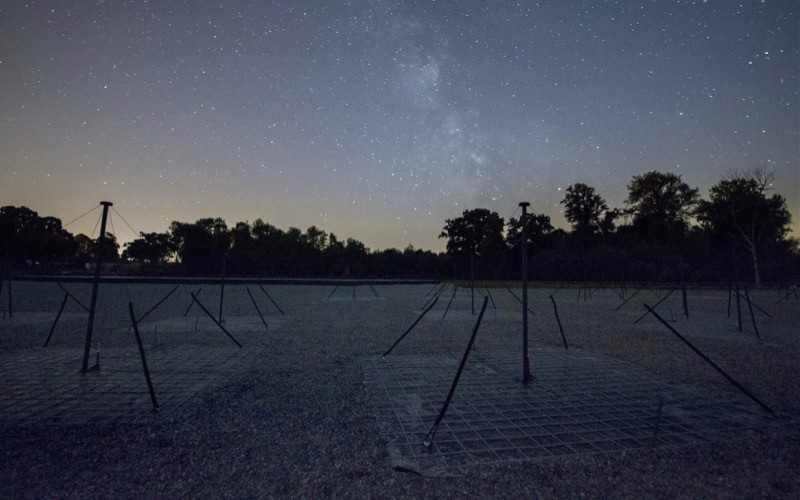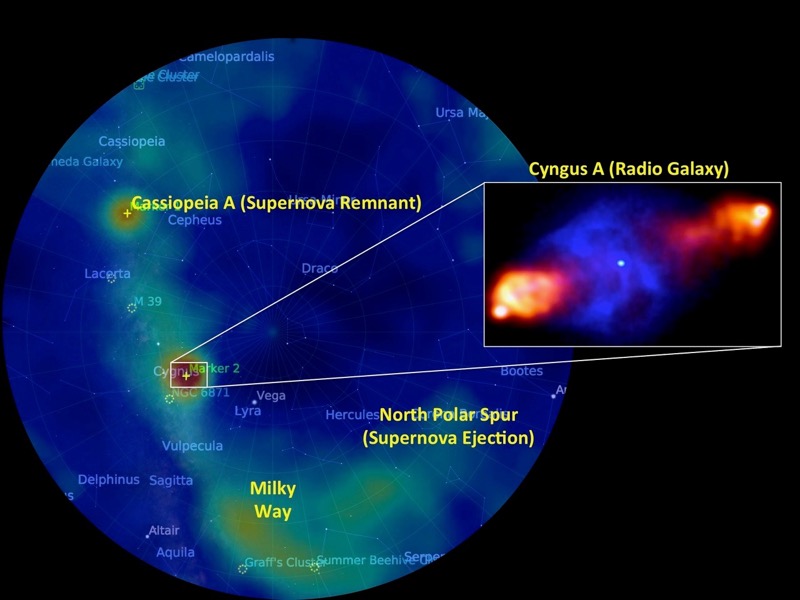Scientists switch on world-leading radio telescope
Posted on: 27 July 2017
Minister of State for Training, Skills, Innovation, Research and Development, John Halligan TD, was at Birr Castle, Co. Offaly today to officially switch on the I-LOFAR telescope, which is the largest radio telescope in the world.
The International LOFAR (LOw Frequency ARray) Telescope is a €150 million network of radio telescopes distributed across Europe. Irish Government and agency investment, coupled with world-leading expertise from Trinity and Ireland's research pool, has propelled Ireland to the forefront of radio astronomy.

The Irish telescope, I-LOFAR, is located at Birr, Co Offaly adjacent to the historic Leviathan telescope, which was built by the 3rd Earl of Rosse in 1845 and was the largest optical telescope in the world until 1917. The telescope in Birr has been supported with an award of €1.4 million from Science Foundation Ireland and the annual membership fee for LOFAR will be funded by the Department of Jobs, Enterprise and Innovation.
Professor Peter Gallagher, Head of the I-LOFAR Collaboration and Associate Dean of Research at Trinity, said: “The Irish LOFAR radio telescope opens up a new era of astronomical research in Ireland and connects us to the leading network of radio telescopes in Europe. It will be used to study the early Universe, detect exploding stars, search for new planets and understand the effects of the Sun on the Earth."
"The huge volumes of data that the radio telescope will produce will require us to develop new software and data analytics techniques to process and understand the data. I-LOFAR really is a test-bed for big data in Ireland.”
Speaking at the event, Minister of State for Training, Skills, Innovation, Research and Development, John Halligan TD, said: "I am delighted to turn the switch on I-LOFAR and link Ireland with our European partners in this pioneering research collaboration in astronomy. Membership of LOFAR affords a unique opportunity for research and engagement to young people across the country with astronomy and science in general. As Minister it is my distinct pleasure to be here to celebrate the achievement of such a wide section of the Irish scientific community."

Joining LOFAR marks another important milestone in the implementation of Innovation 2020, the national strategy for research and innovation. It will support exciting, world-class scientific research and in addition the data intensive nature of radio astronomy will enhance Ireland’s world-leading capability in big data and data analytics.
The skills in software and big data that young researchers will acquire from participation in LOFAR are in high demand in business and will open diverse and high quality career opportunities for them.
Professor Mark Ferguson, Director General of Science Foundation Ireland and Chief Scientific Adviser to the Government of Ireland, said: “We are delighted to see the progress that has been made in constructing I-LOFAR at Birr Castle. Science Foundation Ireland has supported this through an investment of €1.4m, to ensure that we have world-class research facilities in Ireland that enable researchers to explore new ideas in the areas of radio astronomy, big data, data analytics and supercomputing. I am confident that this cutting-edge infrastructure will create exciting opportunities for new and innovative collaborations between researchers, and enable them to secure future funding from industry and from EU programmes.”
Open eir has provided the high-speed fibre connection required to power the telescope. Commenting on the company’s involvement Richard Moat, CEO of eir, said: “'This is an amazing initiative, which represents a significant step forward in astronomical research, and we at eir are very proud to be able to play a part. We have deployed cutting edge fibre wavelength technology, providing 10GB uncontended symmetrical access to I-LOFAR at Birr Castle. These speeds are game changing for I-LOFAR and enable the team to transmit and exchange vast amounts of data to the I-LOFAR network in Europe. Working in collaboration with HEAnet we have connected the circuit to Groningen in the Netherlands, which is currently transmitting 3.2 gigabits per second.”
